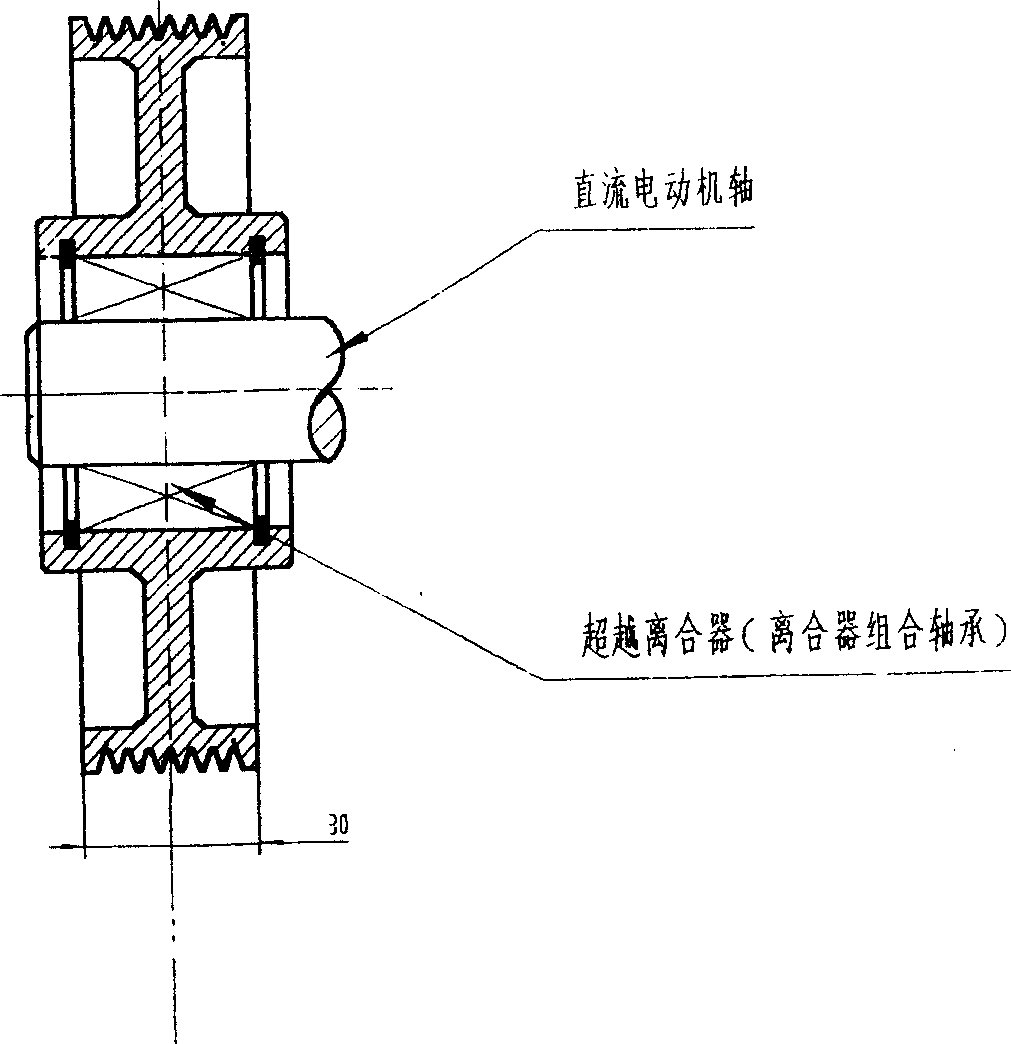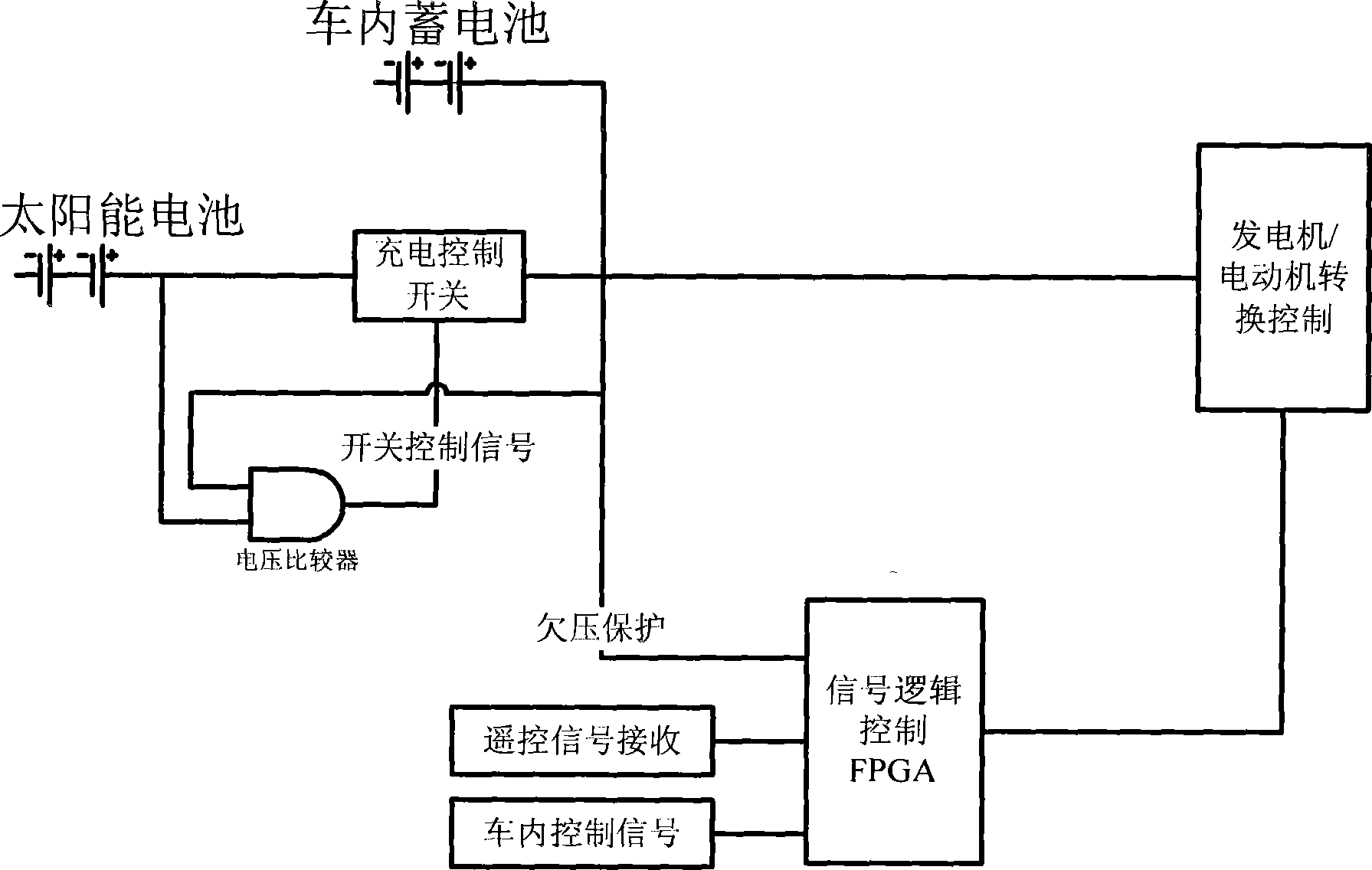Solar air-conditioner for automobile
A technology of automobile air conditioning and solar energy, applied in air conditioning systems, vehicle parts, air treatment equipment, etc., can solve the problems of difficulty in promotion and unsatisfactory effect, and achieve the effect of great promotion value, reducing fuel expenses and saving energy.
- Summary
- Abstract
- Description
- Claims
- Application Information
AI Technical Summary
Problems solved by technology
Method used
Image
Examples
Embodiment Construction
[0023] The present invention draws on the realization idea of the existing hybrid electric vehicle, uses the electric energy generated by the solar battery panel as the auxiliary energy supply channel of the automobile air conditioner, and meanwhile retains the energy supply channel used by the existing automobile air conditioner. When the sunlight is strong and the energy supply of solar cells is relatively sufficient, the solar power is given priority to power supply, which can reduce the consumption of fuel; and when the sunlight is insufficient, it can be switched to the energy supply channel of the existing car air conditioner, by The car engine drives the air conditioner compressor, which is used as an ordinary car air conditioner. Therefore, the solar car air conditioner does not have the problem of insufficient power supply like the solutions mentioned in the background technology. When users need it, air conditioning service can be provided at any time.
[0024] Ba...
PUM
 Login to View More
Login to View More Abstract
Description
Claims
Application Information
 Login to View More
Login to View More - R&D
- Intellectual Property
- Life Sciences
- Materials
- Tech Scout
- Unparalleled Data Quality
- Higher Quality Content
- 60% Fewer Hallucinations
Browse by: Latest US Patents, China's latest patents, Technical Efficacy Thesaurus, Application Domain, Technology Topic, Popular Technical Reports.
© 2025 PatSnap. All rights reserved.Legal|Privacy policy|Modern Slavery Act Transparency Statement|Sitemap|About US| Contact US: help@patsnap.com



